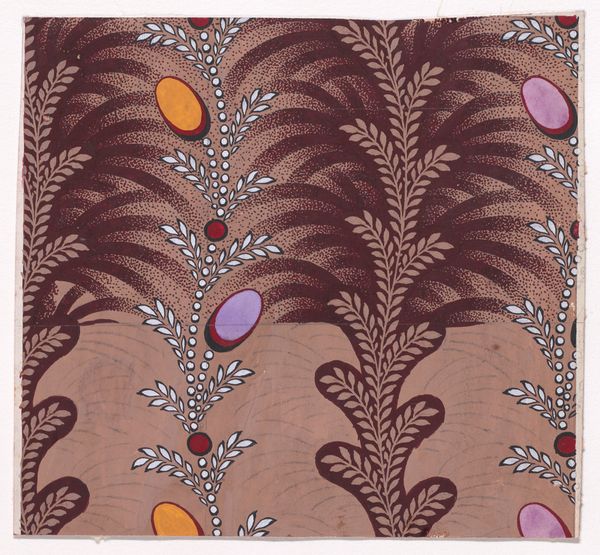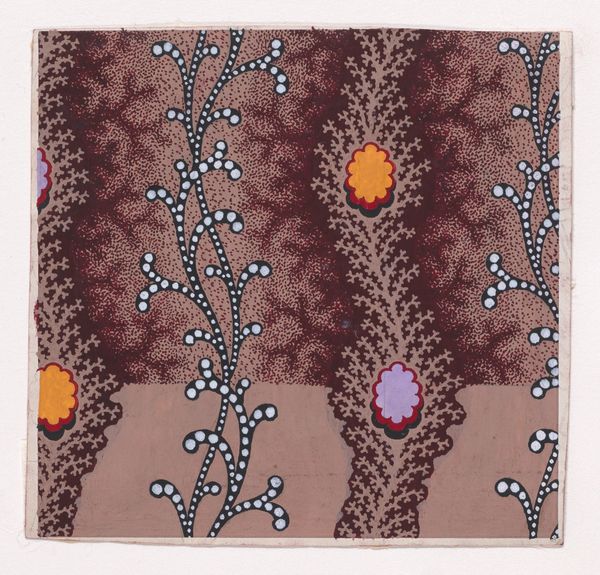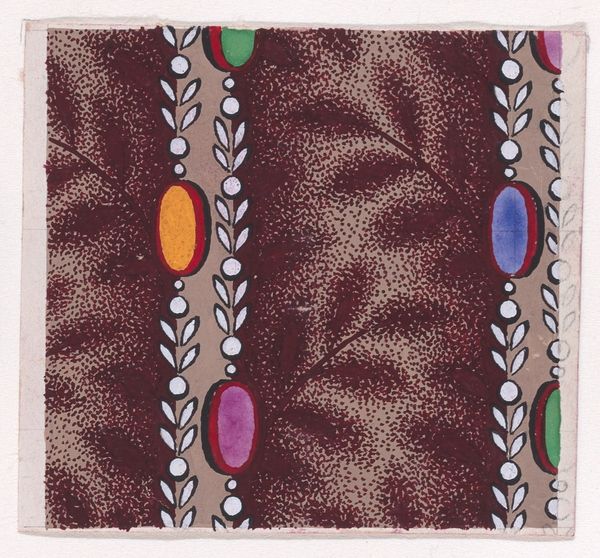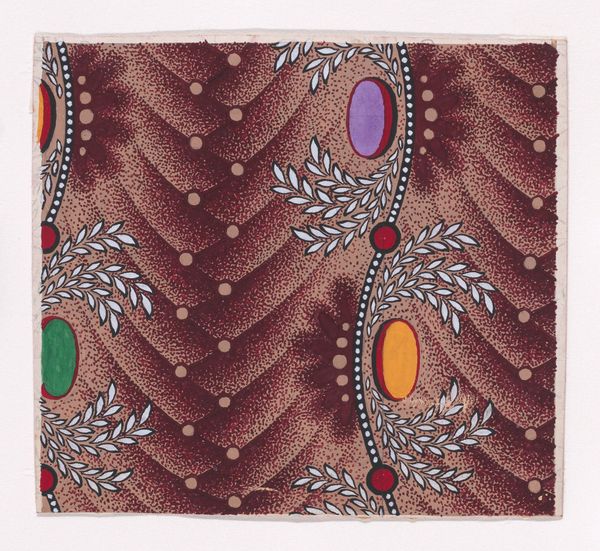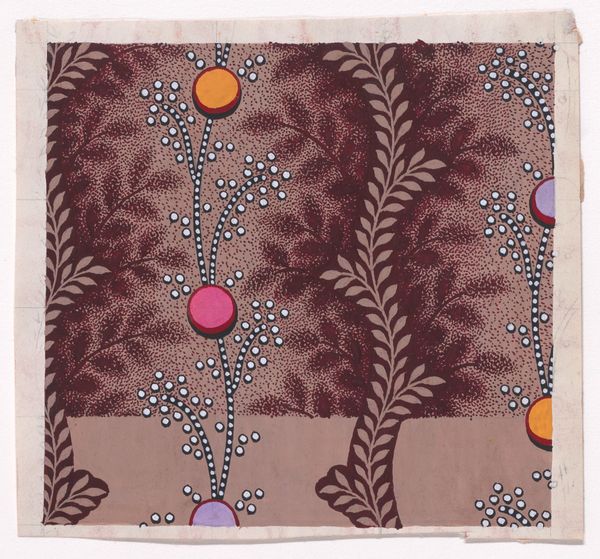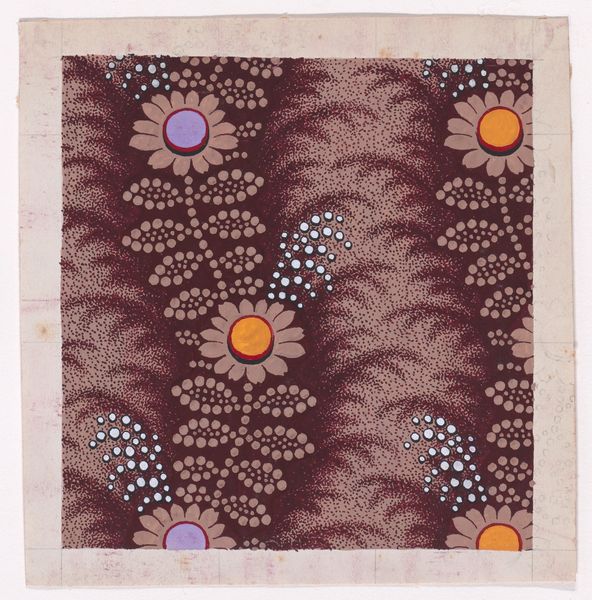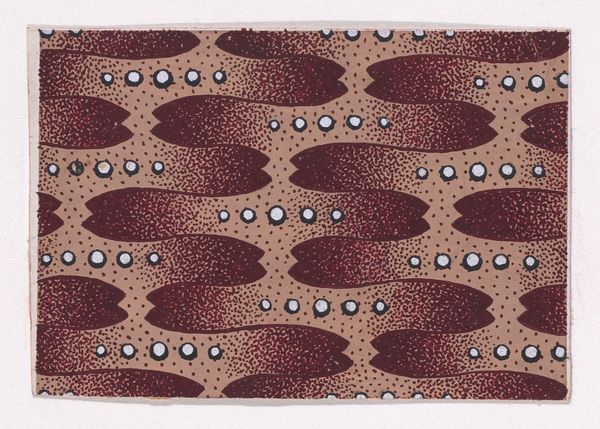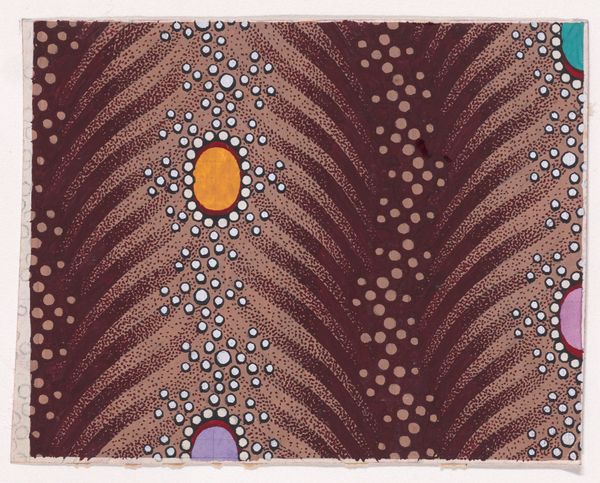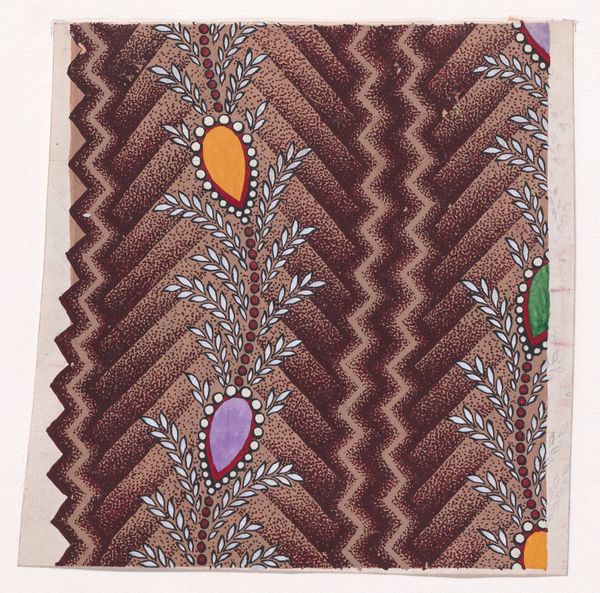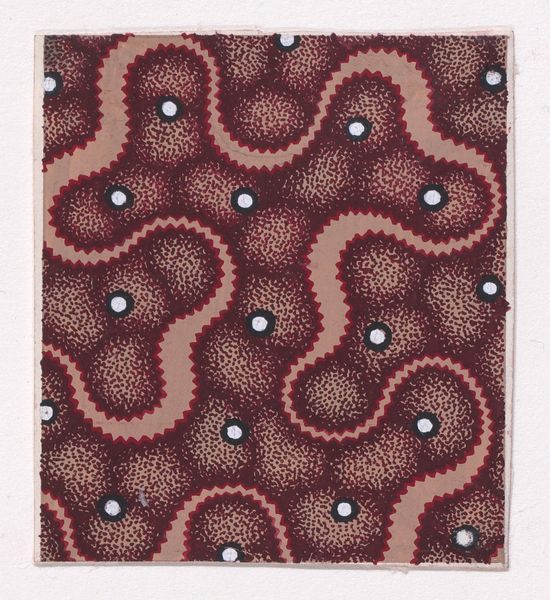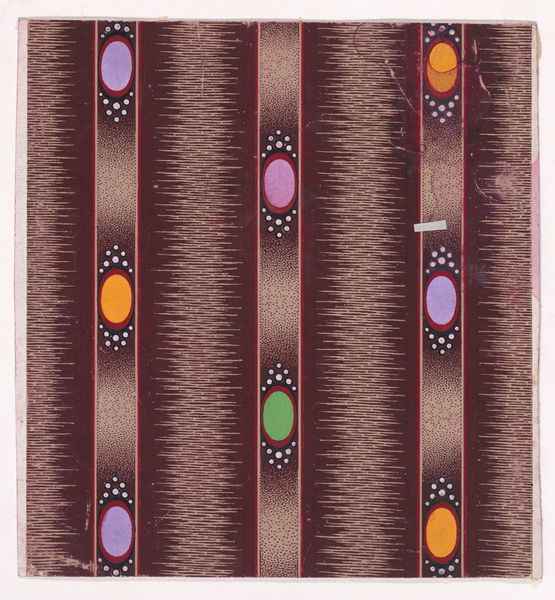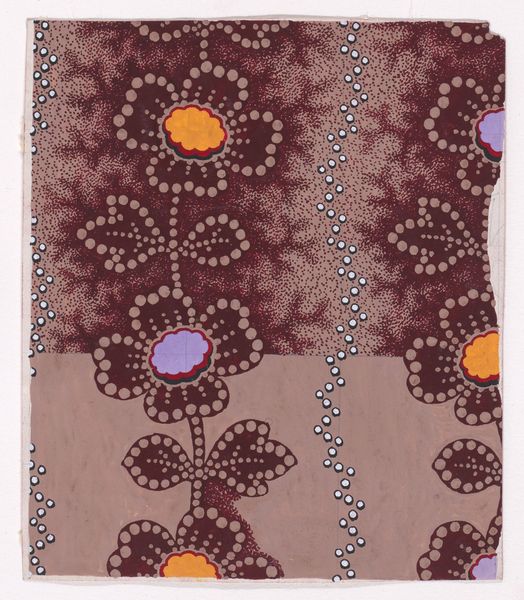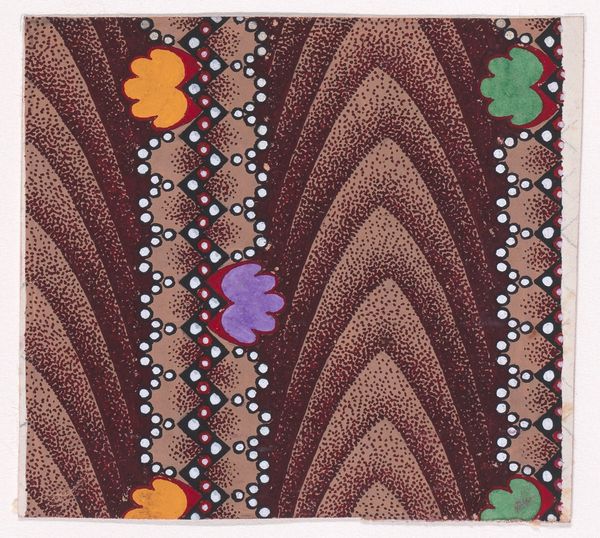
Textile Design with Alternating Vertical Rows of Undulating Stylized Wheat Ears and Undulating Strips of Pearls with Alternating Offsetting Wheat Ears and Lens Shapes 1840
0:00
0:00
drawing, print, textile
#
drawing
#
naturalistic pattern
# print
#
textile
#
geometric
#
naive art
#
pattern repetition
#
academic-art
#
layered pattern
Dimensions: Sheet: 4 11/16 × 4 1/4 in. (11.9 × 10.8 cm)
Copyright: Public Domain
Editor: This is a textile design from 1840, created by an anonymous artist. It features alternating rows of stylized wheat ears and pearl strips, alongside lens shapes. I’m really struck by how meticulously everything is patterned, a testament to a real commitment to repetitive form. What aspects stand out to you? Curator: What grabs my attention is the explicit demonstration of labor through this print. This wasn't simply about artistic expression; it's about mass production. This textile reflects the socio-economic landscape where designs like these were intended for widespread consumption, feeding the burgeoning industrial markets. Consider the dyes used, too – how were they sourced, processed, and what did that imply for trade routes and labour conditions? Editor: So, it’s less about the artistic intention and more about the industrial context? Curator: Precisely! We must look beyond the surface aesthetics to understand the underlying structures of production and consumption. How does the material, likely cotton, influence the design itself? The repeat pattern allowed for continuous printing, reducing waste, maximizing profits, and creating uniformity. Also, it is interesting that the author remains unknown; isn't it? What statement does the author's identity not being known makes? Editor: I suppose it highlights how much the individual gets subsumed by the industry… the worker’s hand replaced by the machine’s efficiency. The material speaks for itself, in a way. It makes you think about all those unseen hands in the textile mills. Curator: Exactly. This design isn’t just a decorative object; it’s a material embodiment of its time. Editor: It definitely changes my perception of textile designs from this period. I won't look at patterns the same way again! Thanks for broadening my view. Curator: My pleasure. It’s important to consider the whole cycle, from the field to the final product.
Comments
No comments
Be the first to comment and join the conversation on the ultimate creative platform.
